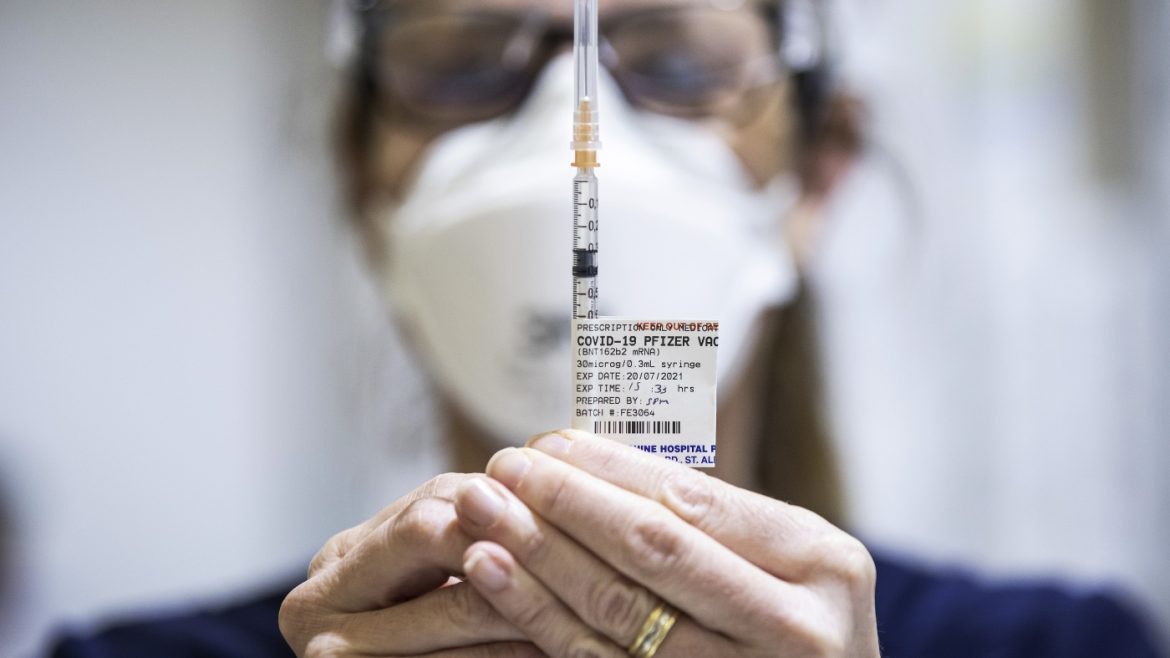The ongoing crisis in the Gaza Strip has compounded multiple humanitarian challenges, notably in food distribution and public health, particularly regarding COVID-19 vaccination efforts. Recent developments reveal a complex interplay of political tensions, logistical barriers, and public health concerns that deepen the crisis faced by Gazans.
Turmoil in Humanitarian Aid Distribution
On the first day of a newly implemented aid system backed by the U.S. and Israel, chaotic scenes erupted at food distribution centers in Gaza. Hundreds of Gazans, many enduring conditions tantamount to starvation due to the blockade and prolonged conflict, overwhelmed distribution sites. The Gaza Humanitarian Foundation, a controversial U.S.-supported body aimed at wresting control of aid distribution away from traditional UN-led operations, faced immediate challenges. Videos from Rafah showed desperate crowds breaching fences, leading Israeli forces to fire shots into the air to regain control, further intensifying panic and fear among civilians.
This turbulence reflects deeper mistrust and concerns among humanitarian groups and local populations about the new aid model. The United Nations criticized the Gaza Humanitarian Foundation’s approach as inadequate for reaching vulnerable groups effectively. The UN also expressed that despite some limited truck convoys delivering food, medicine, and medical supplies into Gaza, significant portions of the enclave remain without essential assistance. The persistence of the 11-week blockade has created an environment where famine risks are alarmingly high, and aid distribution mechanisms must be both reliable and inclusive to meet critical needs.
Political and Security Dimensions
The aid distribution is further complicated by security concerns. Israeli authorities fear that Hamas could exploit aid operations to bolster its influence in Gaza, leading to the introduction of new guidelines and restricted techniques designed to prevent such control. However, these precautions sometimes result in tightly controlled and limited deliveries, exacerbating scarcity.
The Gaza Humanitarian Foundation’s emergence as a key player symbolizes a shift toward more direct U.S.-Israel involvement in Gaza’s aid sphere—a move met with resistance from traditional humanitarian actors and skepticism among Gaza’s populace. This friction underscores a broader geopolitical struggle influencing humanitarian relief, where aid is entangled with questions about legitimacy, authority, and control in a conflict zone.
COVID-19 Vaccination Challenges Amid Conflict
Parallel to the food crisis, COVID-19 vaccination efforts in Gaza reveal significant hurdles. Studies conducted as recently as 2023 indicate that vaccine coverage remains limited, with hesitancy and distrust prevalent among Gazans. Distrust toward vaccine campaigns is linked to political instability, misinformation, and skepticism about the motives behind vaccination drives.
The Gaza Strip’s healthcare infrastructure is already overstretched due to ongoing conflict, with a fragile system on the brink of collapse. This fragility is compounded by limited access to vaccines and healthcare resources. While some doses, such as the Russian Sputnik V vaccine donated by Moscow and the UAE, have reached Gaza, coverage remains insufficient to control infection rates effectively.
Furthermore, Palestinians in Gaza and the West Bank face systemic barriers related to Israeli policies. Amnesty International and other human rights groups have highlighted the failure of Israeli authorities to provide vaccinations to Palestinians under occupation, framing this as institutionalized discrimination that hampers a unified public health response. The West Bank reports a COVID-19 infection rate of 21%, illustrating the urgency of expanded vaccine access.
Public Health and Humanitarian Implications
The combination of food insecurity and insufficient vaccination increases vulnerability to disease outbreaks, including COVID-19. Tens of thousands of Gazans have stayed in UN-run facilities during conflict escalations, raising concerns about viral transmission in crowded conditions.
The vaccination hesitancy noted among community members and healthcare workers alike points to the need for targeted health communication and trust-building efforts. Without addressing vaccine skepticism and ensuring broad, equitable access, efforts to control the pandemic in Gaza will face severe limitations.
Persistent Barriers and the Path Forward
The situation in Gaza exemplifies how humanitarian crises are exacerbated by overlapping political, security, and public health challenges. Aid distribution faces operational risks and legitimacy struggles, while vaccination efforts lag due to distrust and structural issues in the health system.
Options to improve the scenario include:
– Enhancing Coordination: Harmonizing aid efforts between U.S.-backed groups, UN agencies, and local stakeholders to ensure transparent, efficient food distribution that meets the most urgent needs without political interference.
– Building Trust in Vaccination: Launching community-focused awareness campaigns that engage trusted local health workers, dispel misinformation, and facilitate vaccine acceptance.
– Expanding Vaccine Access: Facilitating equitable supplies and distribution mechanisms that transcend political boundaries, ensuring Palestinians’ right to health irrespective of governance divisions.
– Alleviating Blockades: Encouraging political and diplomatic interventions to lift restrictions that exacerbate famine risks and hinder humanitarian access.
Conclusion: Navigating Complexity Amid Crisis
The Gaza Strip’s current struggles with food distribution chaos and insufficient COVID-19 vaccination coverage outline a dire humanitarian predicament intensified by geopolitical conflicts. Effective relief demands sensitivity to local context, concerted multilateral cooperation, and a commitment to depoliticizing essential aid and health measures. Without these, the plight of Gazans risks deepening further as hunger, disease, and mistrust intertwine in this embattled territory.


